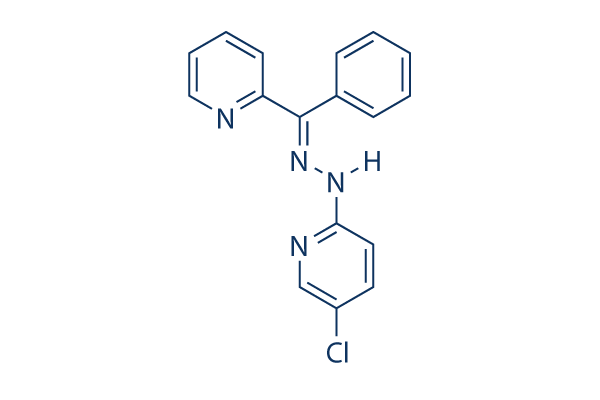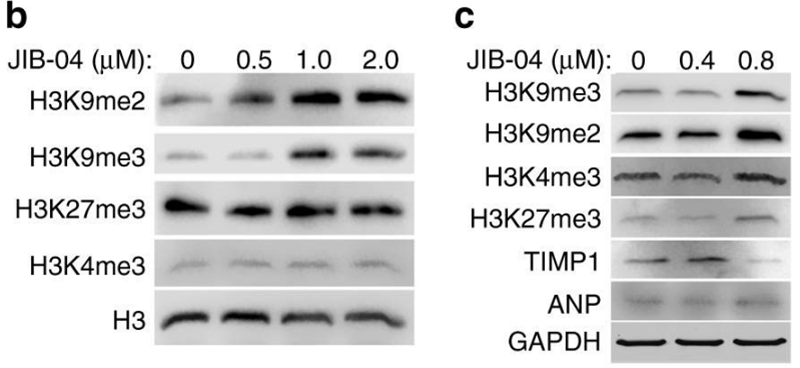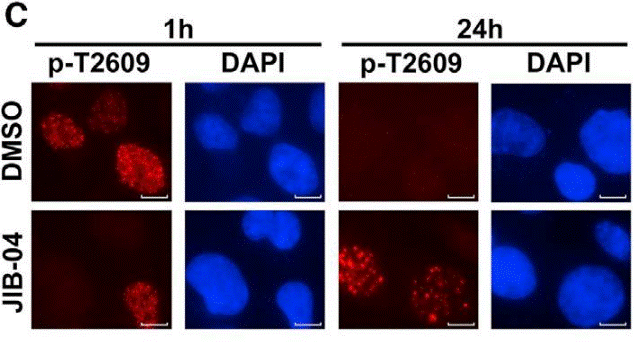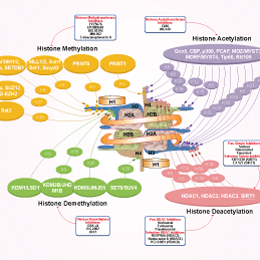
- 阻害剤
- 研究分野別
- PI3K/Akt/mTOR
- Epigenetics
- Methylation
- Immunology & Inflammation
- Protein Tyrosine Kinase
- Angiogenesis
- Apoptosis
- Autophagy
- ER stress & UPR
- JAK/STAT
- MAPK
- Cytoskeletal Signaling
- Cell Cycle
- TGF-beta/Smad
- 化合物ライブラリー
- Popular Compound Libraries
- Customize Library
- Clinical and FDA-approved Related
- Bioactive Compound Libraries
- Inhibitor Related
- Natural Product Related
- Metabolism Related
- Cell Death Related
- By Signaling Pathway
- By Disease
- Anti-infection and Antiviral Related
- Neuronal and Immunology Related
- Fragment and Covalent Related
- FDA-approved Drug Library
- FDA-approved & Passed Phase I Drug Library
- Preclinical/Clinical Compound Library
- Bioactive Compound Library-I
- Bioactive Compound Library-II
- Kinase Inhibitor Library
- Express-Pick Library
- Natural Product Library
- Human Endogenous Metabolite Compound Library
- Alkaloid Compound LibraryNew
- Angiogenesis Related compound Library
- Anti-Aging Compound Library
- Anti-alzheimer Disease Compound Library
- Antibiotics compound Library
- Anti-cancer Compound Library
- Anti-cancer Compound Library-Ⅱ
- Anti-cancer Metabolism Compound Library
- Anti-Cardiovascular Disease Compound Library
- Anti-diabetic Compound Library
- Anti-infection Compound Library
- Antioxidant Compound Library
- Anti-parasitic Compound Library
- Antiviral Compound Library
- Apoptosis Compound Library
- Autophagy Compound Library
- Calcium Channel Blocker LibraryNew
- Cambridge Cancer Compound Library
- Carbohydrate Metabolism Compound LibraryNew
- Cell Cycle compound library
- CNS-Penetrant Compound Library
- Covalent Inhibitor Library
- Cytokine Inhibitor LibraryNew
- Cytoskeletal Signaling Pathway Compound Library
- DNA Damage/DNA Repair compound Library
- Drug-like Compound Library
- Endoplasmic Reticulum Stress Compound Library
- Epigenetics Compound Library
- Exosome Secretion Related Compound LibraryNew
- FDA-approved Anticancer Drug LibraryNew
- Ferroptosis Compound Library
- Flavonoid Compound Library
- Fragment Library
- Glutamine Metabolism Compound Library
- Glycolysis Compound Library
- GPCR Compound Library
- Gut Microbial Metabolite Library
- HIF-1 Signaling Pathway Compound Library
- Highly Selective Inhibitor Library
- Histone modification compound library
- HTS Library for Drug Discovery
- Human Hormone Related Compound LibraryNew
- Human Transcription Factor Compound LibraryNew
- Immunology/Inflammation Compound Library
- Inhibitor Library
- Ion Channel Ligand Library
- JAK/STAT compound library
- Lipid Metabolism Compound LibraryNew
- Macrocyclic Compound Library
- MAPK Inhibitor Library
- Medicine Food Homology Compound Library
- Metabolism Compound Library
- Methylation Compound Library
- Mouse Metabolite Compound LibraryNew
- Natural Organic Compound Library
- Neuronal Signaling Compound Library
- NF-κB Signaling Compound Library
- Nucleoside Analogue Library
- Obesity Compound Library
- Oxidative Stress Compound LibraryNew
- Phenotypic Screening Library
- PI3K/Akt Inhibitor Library
- Protease Inhibitor Library
- Protein-protein Interaction Inhibitor Library
- Pyroptosis Compound Library
- Small Molecule Immuno-Oncology Compound Library
- Mitochondria-Targeted Compound LibraryNew
- Stem Cell Differentiation Compound LibraryNew
- Stem Cell Signaling Compound Library
- Natural Phenol Compound LibraryNew
- Natural Terpenoid Compound LibraryNew
- TGF-beta/Smad compound library
- Traditional Chinese Medicine Library
- Tyrosine Kinase Inhibitor Library
- Ubiquitination Compound Library
-
Cherry Picking
You can personalize your library with chemicals from within Selleck's inventory. Build the right library for your research endeavors by choosing from compounds in all of our available libraries.
Please contact us at info@selleck.co.jp to customize your library.
You could select:
- 抗体
- 新製品
- お問い合わせ
JIB-04
別名:NSC 693627
JIB-04 (NSC 693627) is a pan-selective Jumonji histone demethylase inhibitor with IC50 of 230, 340, 855, 445, 435, 1100, and 290 nM for JARID1A, JMJD2E, JMJD3, JMJD2A, JMJD2B, JMJD2C, and JMJD2D in cell-free assays, respectively. JIB‑04 also induces cell apoptosis.

CAS No. 199596-05-9
文献中Selleckの製品使用例(24)
カスタマーフィードバック2例
製品安全説明書
現在のバッチを見る:
純度:
99.80%
99.80
JIB-04関連製品
シグナル伝達経路
Histone Demethylase阻害剤の選択性比較
生物活性
| 製品説明 | JIB-04 (NSC 693627) is a pan-selective Jumonji histone demethylase inhibitor with IC50 of 230, 340, 855, 445, 435, 1100, and 290 nM for JARID1A, JMJD2E, JMJD3, JMJD2A, JMJD2B, JMJD2C, and JMJD2D in cell-free assays, respectively. JIB‑04 also induces cell apoptosis. | |||||||||||
|---|---|---|---|---|---|---|---|---|---|---|---|---|
| Targets |
|
| In Vitro | ||||
| In vitro | JIB-04 induces transcriptional changes in a cancer-selective manner, including the downregulation of proliferative genes and the upregulation of the anti-proliferative/pro-apoptotic genes. This compound blocks growth of lung and prostate cancer lines with IC50 as low as 10 nM, while produces less anti-proliferative activities on HBECs and PrSCs/PrECs. [1] | |||
|---|---|---|---|---|
| Kinase Assay | Jumonji demethylase/prolyl hydroxylase/LSD1 activity assays | |||
| Active JMJD2E aa 1-350 is purified from E.coli and used in vitro in the presence of α-ketoglutarate, 5-10 μM iron, ascorbic acid and a histone peptide substrate in a coupled reaction with formaldehyde dehydrogenase supplemented with NAD+ to quantify NADH production or using Epigentek kit P-3081. For histone demethylation reactions quantified by Western analysis, a His-tagged hJMJ2D aa 1-350 expression construct, the kind gift of Drs. Y. Shi and J. Whetstine, is expressed and purified from E.coli following the Qiagen Ni-NTA agarose manual instructions and the protocol of Whestine et al 54. Briefly, protein is eluted in 50 mM TrisHCl pH 7.8 + 0.3 M NaCl + 10% Glycerol + 200 mM immidazol, and dialyzed against 20 mM TrisHCl pH 7.4, 0.15 M NaCl, 0.2 mM PMSF, 0.5 mM DTT, 8% glycerol. Enzyme is aliquoted, flash frozen and stored at -80°C. For activity assays by Western blot, ~1.5 μg of enzyme are combined with 0.3 μg H3K9me3 substrate (Active Motif #31213) in 10 μM (NH4)2Fe(SO4)2, 1 mM α-ketoglutarate, and 2 mM sodium L-ascorbate in 50 mM Hepes pH 7.9 in the presence of vehicle or drug and incubated for 30 min-2 hrs at 37°C. SDS loading buffer is added to the reactions, and after boiling, samples are run on NuPage 4-12% Bis-Tris gels, transferred to nitrocellulose and blotted using Upstate #07-523 to detect H3K9me3. For the detection of H3 total signal, we uses Active Motif #39763 (primary) and IRDye 680 conjugated donkey anti-rabbit IgG (secondary, LI-COR # 926-32223) and imaged blots in an Odyssey Infrared Imaging system kindly made available by Dr. M. Cobb. For in vitro IC50 determinations and competition studies, typically 100-200 ng of purified protein are incubated with vehicle, JIB-04 or analogs, as indicated in figure legends and activity measured by ELISA (Epigentek kit P-3081 for H3K9me3 demethylation, P-3083 for H3K4me3 demethylation, and P-3085 for H3K27me3 demethylation) in reactions containing 50mM Hepes pH 7.5, 0.01% Tween 20, 120nM (NH4)2Fe(SO4)2, 1 mM α-ketoglutarate, 2 mM sodium L-ascorbate and 50ng peptide substrate. Final enzyme concentrations in the reactions were as follows: 206 nM JMJD2A, 12 nM JMJD2B, 60 nM JMJD2C, 90 nM JMJD2D E.coli, 30 nM JMJD2D Sf9, 30 nM JMJD2E, 30 nM Jarid1a, 35 nM JMJD3. Background readings are given by heat inactivated enzymes, 0.5-1 mM 2,4 PDCA or reactions with no 2-OG. hJMJD2A (aa1-350) purified in E.coli is the kind gift of Dr. Jose Rizo-Rey and is assayed at 400 ng/reaction due to its intrinsic low activity. GraphPad Prism software is used for IC50 calculations and curve fitting. E.coli JMJD2D purified by us and Sf9 JMJD2D from BPS gave undistinguishable results. Note that for substrate competition assays, in order to remain in the linear range of the assay and not saturate binding capacity of the ELISA plate, reactions with > 0.75μM H3K9me3 containes unbiotinylated substrate or are diluted at the detection step and signals adjusted per dilution factor. For the direct quantification of H3K9me3 demethylase activity in cell lysates, treated cells (plated at 2 million/10cm dish) or tumor homogenates in PBS were sonicated (3x 4 sec) and equal amounts of protein are incubated with a histone H3K9me3 substrate in a reaction buffer containing cofactors for 2h at 37°C before specific immune-detection of the H3K9me2 product using Epigentek kit P-3081 reagents. 500 ng of E.coli purified PHD2 protein in 40mM Tris pH 7.4, 100mM NaCl, 20% glycerol, 5mM β-mercapto-ethanol, 10mM maltose are used to obtain activity in the linear range. Biotinylated peptides derived from the HIF-1 ODD (Biotin-Acp-DLDLEALAPYIPADDDFQL or Biotin-Acp-DLDLEALAP(OH)YIPADDDFQL as a hydroxylated control) are immobilized on Neutravidin-coated 96-well plates. Enzyme is incubated in the coated wells in reaction buffer (20 mM Tris-Cl pH 7.5, 5 mM KCl, 1.5 mM MgCl2, 2 mM DTT, 0.12 μM ferrous sulfate, 0.5 mM 2-oxoglutarate and 1 mM ascorbate) for 45 min at room temperature in the presence of the indicated drugs. The competitive analog of α-ketoglutarate, DMOG, is used as a positive control for inhibition. Peptide hydroxylation is detected using a polyclonal rabbit antibody raised against a hydroxylated HIF peptide epitope, (rabbit anti-hydroxyproline 4817, made in house), followed by addition of a goat anti-rabbit HRP-conjugated secondary antibody. Luminescence is measured in an EnVision plate reader. The activity of LSD1 recombinant protein is measured using Epigentek kit P-3075 according to the manufacturer’s protocol with the proprietary inhibitor. | ||||
| 細胞実験 | 細胞株 | Human lung cancer cell lines (LCa), primary or immortalized non-tumorigenic HBECs, prostate cancer (PCa), primary prostate stromal (PrSC) and prostate epithelial cells (PrEC). | ||
| 濃度 | ~10 μM | |||
| 反応時間 | 96 hours | |||
| 実験の流れ | For cell viability assays, cells are plated at 1500-3000 cells/well in 96 well plates and treated the next day with increasing doses of this compound over 4 days and their viability assessed by standard MTS assays using Promega’s Cell Titer or Cell Titer-Glo reagents according to the manufacturer’s protocols. Absorbance at 490 nm and 650 nm or luminescence is measured by a Spectra Max or a FlouroStar Omega plate reader. Data are normalized to the untreated controls (100% viability). Each cell line is tested in 2-5 independent assays, each containing 4-8 replicates. IC50 values are calculated using DIVISA, a high-throughput software, developed in hous, for storing and analyzing drug sensitivity assays. Dose-response curves are plotted using a non-linear regression model and IC50s are determined from the fitted curves. The average IC50 derived from 2-5 independent assays, each containing 4-8 replicates is reported. |
|||
| 実験結果図 | Methods | Biomarkers | 結果図 | PMID |
| Western blot | H3K9me2 / H3K9me3 / H3K27me3 / H3K4me3 / TIMP1 / ANP αCD133 |

|
30531796 | |
| Immunofluorescence | DNA-PKcs |

|
30355483 | |
| Growth inhibition assay | Cell viability |

|
30237855 | |
| In Vivo | ||
| In Vivo | In two separate xenograft mouse models (H358 or A549), JIB-04 diminishes tumor growth, lowers Jumonji histone demethylase activity in tumors, and prolongs cancer survival. [1] | |
|---|---|---|
| 動物実験 | 動物モデル | Mice harboring H358 xenografts or A549 xenografts |
| 投与量 | 110 mg/kg (H358, i.p.), 55 mg/kg (A549, Oral gavage) | |
| 投与経路 | Oral gavage or i.p. | |
|
化学情報
| 分子量 | 308.76 | 化学式 | C17H13ClN4 |
| CAS No. | 199596-05-9 | SDF | Download JIB-04 SDFをダウンロードする |
| Smiles | C1=CC=C(C=C1)C(=NNC2=NC=C(C=C2)Cl)C3=CC=CC=N3 | ||
| 保管 | |||
|
In vitro |
DMSO : 62 mg/mL ( (200.8 mM); 吸湿したDMSOは溶解度を減少させます。新しいDMSOをご使用ください。) Water : Insoluble Ethanol : Insoluble |
モル濃度計算器 |
|
in vivo Add solvents to the product individually and in order. |
投与溶液組成計算機 | |||||
実験計算
投与溶液組成計算機(クリア溶液)
ステップ1:実験データを入力してください。(実験操作によるロスを考慮し、動物数を1匹分多くして計算・調製することを推奨します)
mg/kg
g
μL
匹
ステップ2:投与溶媒の組成を入力してください。(ロット毎に適した溶解組成が異なる場合があります。詳細については弊社までお問い合わせください)
% DMSO
%
% Tween 80
% ddH2O
%DMSO
%
計算結果:
投与溶媒濃度: mg/ml;
DMSOストック溶液調製方法: mg 試薬を μL DMSOに溶解する(濃度 mg/mL, 注:濃度が当該ロットのDMSO溶解度を超える場合はご連絡ください。 )
投与溶媒調製方法:Take μL DMSOストック溶液に μL PEG300,を加え、完全溶解後μL Tween 80,を加えて完全溶解させた後 μL ddH2O,を加え完全に溶解させます。
投与溶媒調製方法:μL DMSOストック溶液に μL Corn oil,を加え、完全溶解。
注意:1.ストック溶液に沈殿、混濁などがないことをご確認ください;
2.順番通りに溶剤を加えてください。次のステップに進む前に溶液に沈殿、混濁などがないことを確認してから加えてください。ボルテックス、ソニケーション、水浴加熱など物理的な方法で溶解を早めることは可能です。
技術サポート
ストックの作り方、阻害剤の保管方法、細胞実験や動物実験の際に注意すべき点など、製品を取扱う時に問い合わせが多かった質問に対しては取扱説明書でお答えしています。
他に質問がある場合は、お気軽にお問い合わせください。
* 必須
よくある質問(FAQ)
質問1:
Do you have any suggestion for in vivo study please? (via injection)
回答
For IP or sub cutaneous injection, this compound is soluble in 4% DMSO+30% PEG 300+5% Tween 80+ddH2O at 3 mg/ml. But when water added, it turned yellowish green immediately. We are not sure if it was still fine in this vehicle. So we tried to use oil. 3mg of it dissolves in 40ul of DMSO clearly, and it can be dilute with corn oil at any proportion.

